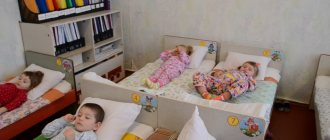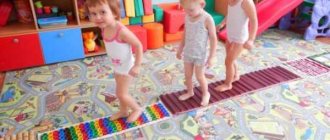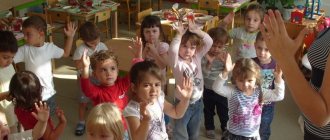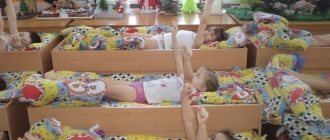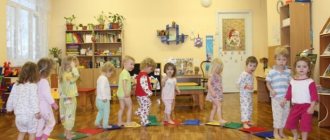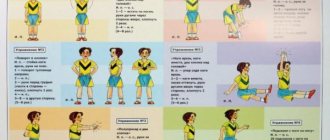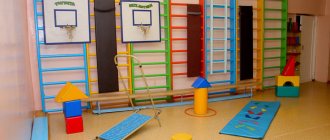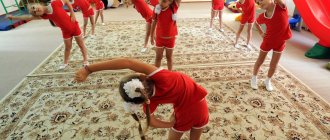Morning exercises for various diseases
To feel ready for action all day long, you need to start your morning off right. To do this, you first need to get out of bed correctly. Don't jump off it, get up slowly. The fact is that the body existed in a different rhythm all night, and its sudden change is shocking. Therefore, from a quick awakening, you can wake up only after half an hour, or even an hour. It’s better to lie down first and stretch. Take a few deep breaths in and out. This helps improve blood circulation in the internal organs. After this, you can turn on your side and do breathing exercises by bending your knees and pressing them into your chest. This helps clear the bile ducts.
If it's sunny outside, enjoy the good weather. After this, slowly sit on the bed, and then get up and go wash.
Stretching your spine in the morning is very beneficial. Lie on your stomach, place your hands on the surface on which you are lying, and arch your back. If you have a cat, you've probably seen it stretch when it wakes up.
It's good if you have a massage mat at home. It's best to get out of bed. It is helpful to stand with both feet on the mat and rock back and forth. There are points on the feet that are responsible for the functioning of many internal organs.
People with osteochondrosis should sleep on a hard surface, preferably without a pillow or on a flat one. Breathing exercises are very beneficial for them. You need to get out of bed slowly and carefully. It is best to lower your legs first, then sit up and open your eyes. While sitting on the bed, it is recommended to turn your head first to the right, then to the left. This needs to be done slowly. It is also useful to tilt it forward and backward.
For those who have varicose veins, it is best to sleep with your legs slightly elevated. You need to start your morning by swinging your legs. Lift them while lying on the bed, doing “bicycle” and “scissors”.
For problems with posture
Beautiful posture is the calling card of a modern person. If a person slouches, he does not make a good impression, but a straight back and a beautiful gait immediately inspire trust and favor.
What should you do to have good posture? Unfortunately, now we spend a lot of time at the computer, so it only ends up spoiling our posture, but not improving it in any way. Uncomfortable postures and lack of the required amount of physical activity negatively affect the condition of the spine. We begin to press our heads into our shoulders, hunch over, and move further and further away from our own ideal. But, in fact, you need nothing at all - just do simple exercises that will lead to the fact that you can go out into the street with a beautifully raised head and a straight back.
If you do them regularly, it will help strengthen your muscles and bring your posture to a more or less good state. But in general, all that is required of you is just to watch how you walk and stand. And as soon as you notice that you are slouching, straighten up immediately.
Your back often hurts from sitting incorrectly. To eliminate pain and return straightness to your back, you need to perform some exercises daily.
Lie on your stomach and extend your arms on either side of your body at right angles to it. From above you will resemble the letter T. After this, press your forehead to the floor. It is recommended to do exercises on a soft mat to avoid any extraneous painful sensations. Lift your hands off the floor and hold them in this state for a few seconds. Then lower, relax and perform the above steps again. This simple exercise can be done at any time of the day.
To have beautiful posture, it is recommended to do the following:
Stand on your left leg, bend your right knee and lift it up. Relax your arms along your body. Jump not very high, but very lightly, and change your supporting leg. It is recommended to do this several times. Make sure to keep your head up and your shoulders back. Don't slouch. It is good to do such exercises in front of a mirror so that, firstly, you can always see yourself, and secondly, so that your head is in a raised position.
Stand on your right leg, bend it slightly.
Swing your left one, describing circles. After you stand like this for a while, switch legs and repeat the exercise. Author: K.M.N., Academician of the Russian Academy of Medical Sciences M.A. Bobyr
Exercises in bed in the morning for weight loss: 20 exercises
#1 Stretching
First, you need to wake up the body a little, so gymnastics must begin with stretching to warm up and prepare the muscles.
#2 Head rotation
Sit comfortably on the bed, straighten your back. Lower your head forward, back, then to the left, to the right. After this, begin to move your head in a circular motion clockwise and counterclockwise.
No. 3 “Scissors”
An effective workout for your legs. Lie down, lift them up, make quick and wide swings, crossing straight limbs.
No. 4 “Bicycle”
Exercising in bed in the morning for weight loss should include “bicycle” movements. This workout will perfectly prepare your legs for a busy day. Lying down, we raise our legs up and bend our knees slightly, then make circular movements one after another, imitating pedaling on a bicycle.
#5 Crunches
While sitting, begin to twist at the waist, tilting your left and right shoulders alternately. The exercise is effective for reducing and shaping the waist.
No. 6 Pelvic lift
Place your legs bent at the knees wider than your shoulders. Raise your pelvis and lock in the position for 6-9 seconds. Try to bend well, touching the mattress exclusively with your shoulder blades.
No. 7 Birch
A famous school exercise. Raise your straight legs simultaneously to the top with your pelvis, touching the mattress with your shoulder blades and elbows. Hold for a few seconds, then alternately lower your knees behind your head. A more complicated version - both legs together, synchronously. If it’s difficult, you can bend your knees.
No. 8 Bridge
Support yourself with your feet, place your arms at the level of your temples near your head, and turn your fingers toward your shoulders. Slowly push your body up, arching your back, act carefully, feel the spine. As a result, straighten them. Subsequently, you can complicate the procedure by trying to stand up to your full height from the bridge position.
No. 9 Cobra
Performed in a prone position. Hands located at shoulder level are bent at the elbows. Gradually straighten them, raising your upper body. Perform until tension appears in the lumbar region, holding for 6-8 seconds.
#10 Alternate touch
Lie on your back, while raising your right arm and left leg, touching it with your palm. Such actions strengthen the abdominal and leg muscles.
#11 Leg raise
Performed on the side. Sit comfortably on your left side, support your head with your hand. Slowly lift your straight right leg as far as the stretch allows. After 10-11 repetitions, turn over to the other side.
No. 12 Marching
The set of movements will resemble marching if performed while standing, hence the name. Lying on your back, connect your straightened legs and lift them 10-15 centimeters from the mattress. Straighten your arms along your body, helping to keep your legs elevated. Next, in turn, bend your knees, then your right, then your left, pulling them towards your stomach and chin, then straighten them in their original position.
No. 13 Basket
Lie on your stomach, clasp your feet with your palms, pull them up, forming a circle, a “basket”. Arch your back, the effect is like a bridge, only in reverse.
#14 Foot rotation
They also need to be kneaded. First we rotate in one direction, then in the opposite direction. Next we twist in different directions. Can be performed in one step with rotation of the hands.
No. 15 Rotation with hands
A similar exercise, but aimed at the hands. Straighten your palms or clench them into fists and make circular rotational movements. This is especially true for women who type on a keyboard. Effective prevention against carpal tunnel syndrome, in which a nerve is pinched, impairing sensitivity and finger movements.
No. 16 Developing the shoulders
Sit comfortably, put your legs under you. Rotate your shoulders and forearms forward, then back, lift up, down. As a result, the back is strengthened and the posture is straightened.
#17 Shadowboxing
A fun exercise that helps invigorate the entire body. Lying or sitting, punch the air with your fists, simulating boxing with your opponent. Do not move quickly, as there is a risk of damaging your joints. While lying down, you can “kick” the air with your legs.
#18 Push-ups
You can perform this completely while lying on the mattress. Or make it easier by leaving your legs straight on the bed and your hands on the floor. Next, do the standard push-ups. Good for arms, abs and pectoral muscles.
No. 19 Swing your arms
Vaguely reminiscent of scissoring movements performed with the legs. In this case, hands will be involved. Practice swings first along the body, then across the waist.
No. 20 Concentration
In this case, there is no need to bend or twist anything. Lie on your back, arms along your body, legs together. Relax completely for 5-6 seconds, then for the same time, strongly tense all the muscles of the body, feel them. Implement by replacing each other.
The exercises will take 15-25 minutes, but the benefits from them will be noticeable.
Improved well-being, a toned body, energy, optimism and high productivity throughout the day are just a small part of the benefits of morning exercise.
Gymnastics after sleep as one of the components of health-saving technologies
I am not afraid to repeat once again: Taking care of health is the most important work of a teacher. Sukhomlinsky Vasily Alexandrovich
Health is a great gift, without which it is difficult to make life happy, interesting and long. A healthy child is easier to raise, teach and educate. He develops the necessary skills and abilities faster. He adapts better to changing conditions and adequately perceives the demands placed on him. Health is the most important prerequisite for the formation of character, the development of will, and natural abilities. Currently, one of the priority tasks facing teachers is to preserve the health of children in the process of education and training. The methodological development I have presented is aimed at solving this problem. It presents ways to organize and conduct gymnastics after sleep. A consultation for parents has been developed. The formation of a healthy lifestyle should begin in kindergarten. There are no trifles in this matter. All life activities of a child in a preschool institution should be aimed at maintaining and strengthening health. Gymnastics after sleep is one of the most important building blocks in establishing the foundation of children’s health, which can only be strengthened if carried out systematically. It is difficult to overestimate the role of daytime sleep in the physical and intellectual development of a child. He simply needs a rest in the middle of the day. After a nap, children wake up lethargic and have low performance, as muscle tone is relaxed. All organs and systems (cardiovascular, respiratory, nervous, etc.) are not prepared for the stress that the child’s body will have to overcome during activities in the evening. But how can you help children wake up in a good mood and actively continue the day? Do gymnastics with your children after a quiet hour after bedtime. Gymnastics after daytime sleep is a set of activities that facilitate the transition from sleep to wakefulness. Invigorating gymnastics helps the child’s body wake up, improves mood, and improves muscle tone. After good gymnastics, children’s feelings of drowsiness, lethargy, and weakness disappear, mental and physical performance and activity increase, and the child’s mood and well-being improve. Gymnastics after a nap is a hardening procedure. The purpose of such gymnastics is to promote the quick and comfortable awakening of children after sleep. The objectives of gymnastics after sleep:
- increase the tone of the nervous system;
- strengthen muscle tone;
- contribute to the prevention of musculoskeletal disorders;
- help prevent colds;
- development of physical skills;
- maintain positive emotions when performing physical exercises and other routine moments in the afternoon.
Solving these problems allows you to smoothly and at the same time quickly increase the mental and physical performance of the child’s body. Gymnastics after sleep, its organization and implementation . The transition from the sleep state to the waking state occurs gradually. To facilitate the transition from a state of rest after waking up to a state of active wakefulness, you can turn on music. Music has a positive effect on children's emotions, creates a good mood in them, instills cheerfulness and joy, helps the rhythm of movements, and makes them easier to perform. Children learn to listen to music and coordinate movements with its character, to perform movements expressively and smoothly. It’s good if, after waking up, children hear their favorite children’s songs or calm, pleasant music, then they will wake up much faster. Don't forget to smile. The first thing a child should see after sleep is the smiling face of an adult, and also hear smooth, measured speech, pleasant intonations, and diminutive suffixes. Children subtly feel the emotions of others. An adult needs to be attentive to himself, monitor his facial expressions and emotional state. Children absorb the excitement, anxiety, irritability, and uncertainty of an adult immediately, like a sponge. All experiences will immediately affect the children’s mood. Invigorating gymnastics should be carried out in a well-ventilated area for seven to fifteen minutes, depending on the age of the children. A prerequisite for gymnastics is taking into account the individual characteristics of each child. Gymnastics consists of several parts:
- warm-up exercises in bed;
- performing simple self-massage (finger exercises) or acupressure;
- performing general developmental exercises at the crib (breathing exercises);
- walking on massage mats;
- Gymnastics can end with wiping with cold water or dousing (arms or legs).
In addition to general health-improving goals, each of the structural parts of invigorating gymnastics also solves its own narrower, specific tasks: Part I - gymnastics in cribs - gymnastics in bed is aimed at the gradual transition of children from sleep to wakefulness. It is better to spend it with the children who have woken up; the rest join in as they wake up. Gymnastics in bed can include elements such as stretching, alternately and simultaneously raising and lowering the arms and legs, elements of finger gymnastics, eye gymnastics, etc. The main rule is to exclude sudden movements that can cause muscle strain, overexcitation, and blood pressure drop. pressure and, as a result, dizziness. The duration of gymnastics in bed is about 2-3 minutes. Part II - corrective exercises, hardening procedures - is aimed at preventing flat feet and scoliosis, training children in basic movements (walking on toes, heels, on the outer and inner sides of the foot, with high knees, etc.), providing a hardening effect on the body. This part of the gymnastics is carried out in a well-ventilated group room using massage mats made by the children's parents. Part III – the final one – increases the child’s physical and emotional tone, creates a positive emotional mood in the group, and encourages further active activity. It can be carried out on the basis of game-type gymnastics using 3-6 simulation exercises. Gymnastics of a playful nature have a plot, they contain characters familiar to children, who are role models for the movements of birds, animals, plants, and children create various images (“skier”, “skater”, “gymnast”, “parsley”, “flower” and etc.). By adopting a certain play image, children often better understand the technique of performing a particular exercise. Children of middle and senior preschool age are very fond of invigorating gymnastics complexes in the form of musical and rhythmic exercises. Dance movements mobilize physical strength, develop grace and coordination of movements, strengthen muscles, and improve breathing. You can also use complexes with elements of acupressure, self-massage, and finger exercises. The essence of acupressure is reduced to mechanical irritation of biologically active points on the body that increase immunity. Carrying out gymnastics after a nap in a playful way allows you to create a positive emotional background and arouse increased interest in all health procedures. Thus, several problems are solved simultaneously: improving the health of children, developing their motor imagination, and developing meaningful motor skills. And most importantly, all this gives children great pleasure. All exercises are carried out at a free pace, without coercion. Each child performs exercises to the extent that is accessible and enjoyable to him. If a child for some reason does not want to perform an exercise, he can simply observe the execution, or perform it partially. The duration of the gymnastics is 7-12 minutes. This is determined by the age of the children and their state of health. It is advisable to use different versions of invigorating gymnastics throughout the year. Thus, daily performance of a complex of gymnastics, developed taking into account the patterns of functioning of the body after sleep and the individual characteristics of the child’s body, allows you to prepare the body for upcoming mental, physical and emotional stress, is a good means of preserving and strengthening health, preventing flat feet, provides high mental and physical performance during the second half of the day. Gymnastics after a nap increases the child’s overall level of physical activity, reducing the adverse effects of a sedentary lifestyle. A well-designed gymnastics complex does not cause negative emotions, at the same time it improves the mood, well-being and activity of the child, the tone of the central nervous system and increases the overall resistance of the body. The system of invigorating gymnastics built in this way helps the child’s body gradually and gently transition from sleep to active wakefulness with a simultaneous health-improving effect. Consultation for parents. INVOLVING GYMNASTICS AFTER SLEEP We all know the expression “got off on the wrong foot.” The mood that these words characterize is also familiar. Kindergarten teachers strive to ensure that children wake up after a nap in a good mood, cheerful and energetic. And parents should strive for this at home. Awakening is one of the most important moments contributing to the normal course of vital processes for the child. For this purpose, after daytime sleep, invigorating gymnastics is carried out; it is aimed at a gradual transition from sleep to wakefulness. It includes the following elements:
- stretching,
- alternately raising and lowering arms, legs,
- elements of self-massage,
- elements of finger gymnastics,
- gymnastics for the eyes,
- elements of breathing exercises.
The main rule is to avoid sudden movements that can cause muscle strain, overexcitation and, as a result, dizziness. Then invite the child to walk barefoot in panties:
- on toes,
- heels,
- on the outer and inner sides of the foot,
- with high knees,
- on massage mats.
In this case, you need to monitor the child’s posture and the correct execution of the exercises. Next, you can move on to performing a complex of breathing exercises, which is very important for:
- strengthening the immune system,
- prevention of colds,
- prevention of upper respiratory tract diseases.
At the end of the gymnastics, carry out water procedures (washing with cool water). It’s good if, after waking up, the child hears his favorite children’s songs, then he will probably wake up faster. In order to evoke an emotional response in children, you can use game exercises accompanied by various poems. For example:
